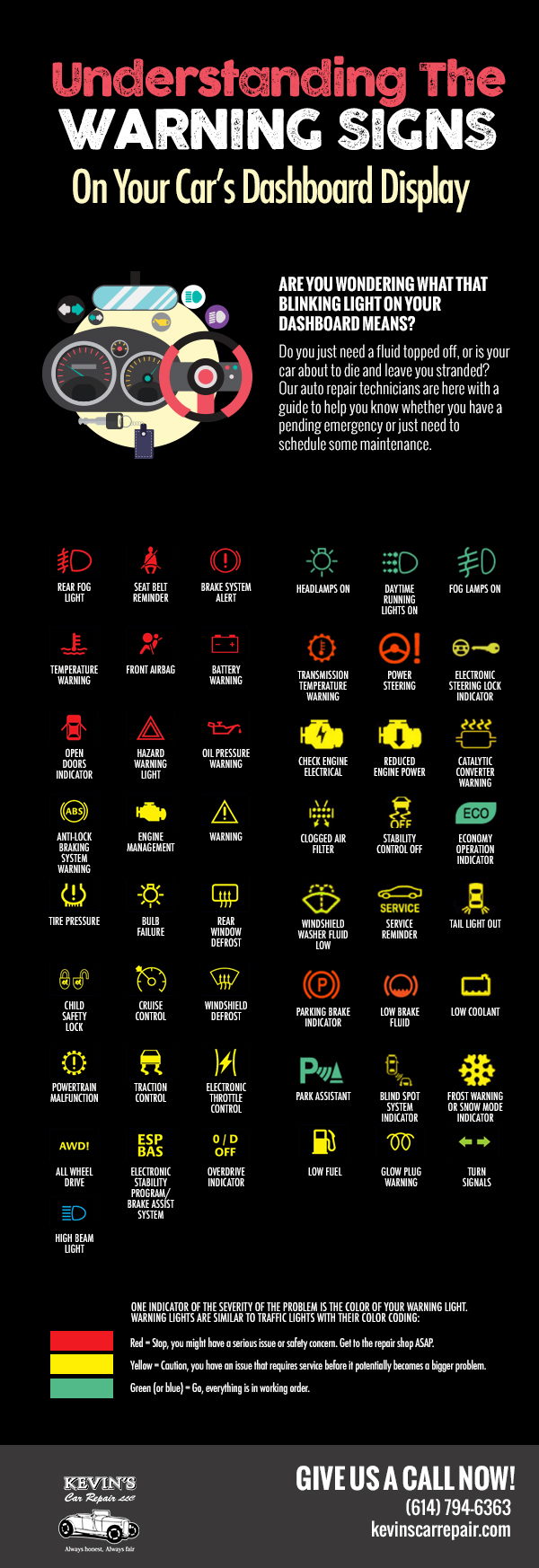Master The Art Of Understanding Vehicle Caution Lights And Deal With Prospective Difficulties With Certainty
Master The Art Of Understanding Vehicle Caution Lights And Deal With Prospective Difficulties With Certainty
Blog Article
Material Author-Gunter Park
When you're behind the wheel, those little warning lights on your car's dashboard can be fairly complicated. What do they suggest, and should you be worried? Recognizing these signals is vital for your automobile's well-being, however it does not have to be an overwhelming job. By decoding the enigma behind each light, you'll be geared up to handle potential concerns efficiently and maintain your vehicle running efficiently. So, next time a caution light flashes, don't panic - arm yourself with understanding and take control of the circumstance.
Value of Auto Warning Lights
Recognizing the value of your vehicle's warning lights is essential for keeping your lorry's health and safety. simply click the following page as your auto's communication system, informing you to potential issues that can endanger your safety and security when traveling or result in pricey repairs if overlooked. By focusing on these warnings, you can deal with problems early and stop more damages to your automobile.
Disregarding warning lights can result in significant repercussions, such as engine failing, brake breakdowns, and even mishaps. These lights are designed to alert you of problems ranging from reduced tire pressure to engine breakdowns, offering you the opportunity to do something about it before the situation intensifies. Regularly inspecting and recognizing these cautions can conserve you time, money, and guarantee your security while driving.
In addition to keeping you risk-free, responding without delay to advising lights can additionally assist prolong the lifespan of your cars and truck. By resolving concerns early on, you can avoid small issues from escalating right into significant repair services, eventually saving you time and money in the future. Keep in mind, your car's caution lights are there for a reason - don't neglect them!
Common Warning Lights and Meanings
When it concerns driving your automobile, knowing typical warning lights and their definitions is necessary for your security and automobile maintenance. Below are a couple of typical caution lights you might experience:
1. ** Inspect Engine Light **: This light indicates a concern with your engine. Maybe something small like a loosened gas cap or something extra severe like engine misfiring.
2. ** Battery Light **: This light signals a problem with your auto's billing system. It could suggest a malfunctioning battery, alternator, or other associated parts.
3. ** Oil Stress Light **: When this light comes on, it suggests your engine may be running low on oil or experiencing low oil pressure, which can lead to engine damage otherwise dealt with without delay.
4. ** Brake System Light **: This light shows a problem with your stopping system. It can imply low brake fluid levels or a problem with the brake system that calls for immediate interest.
Comprehending these usual warning lights will certainly help you identify possible concerns at an early stage and protect against even more significant problems later on.
Exactly how to React To Warning Lights
On the occasion that a warning light brightens on your automobile's control panel, it's critical to respond without delay and properly. When registry mechanic download begins, the initial step is to consult your proprietor's manual to recognize the details concern indicated by the light.
Some lights call for instant interest, while others might suggest a much less immediate issue. If the caution light is red or blinking, it's commonly an indicator of a serious trouble that needs instant activity. In such situations, it's advisable to pull over safely, shut off the engine, and look for specialist assistance.
For yellow or orange warning lights, while they may not need prompt interest, it's still important to deal with the hidden problem without delay to prevent further damage. Routine maintenance and assessment can help protect against cautioning lights from beginning unexpectedly.
Conclusion
To conclude, comprehending your automobile's warning lights is crucial for preserving your vehicle's health and safety. By frequently checking and reacting to these cautions, you can attend to possible problems early and stop pricey repair work or safety threats. Remember to consult your owner's manual for information on various warning lights and always take immediate activity for red or blinking lights. Keep positive and maintain your vehicle running efficiently!
